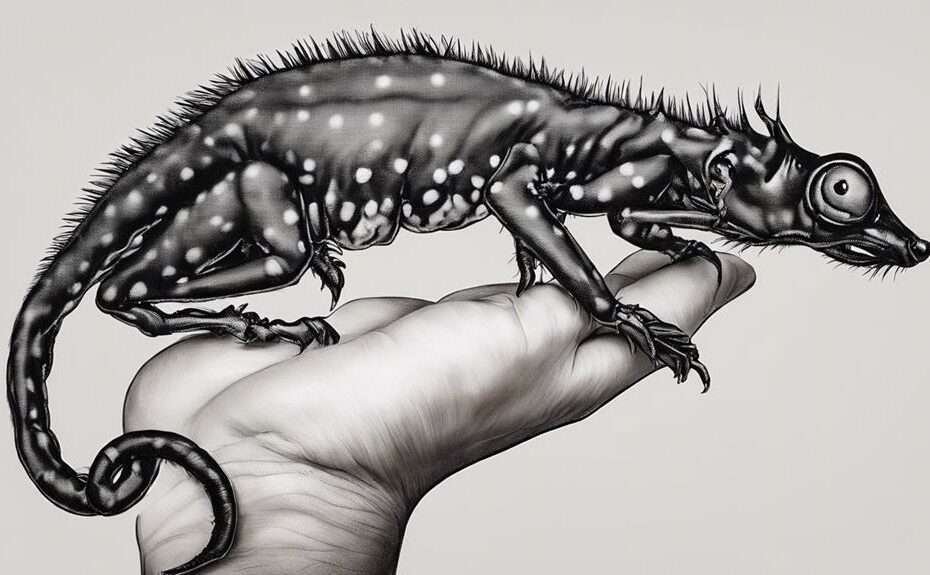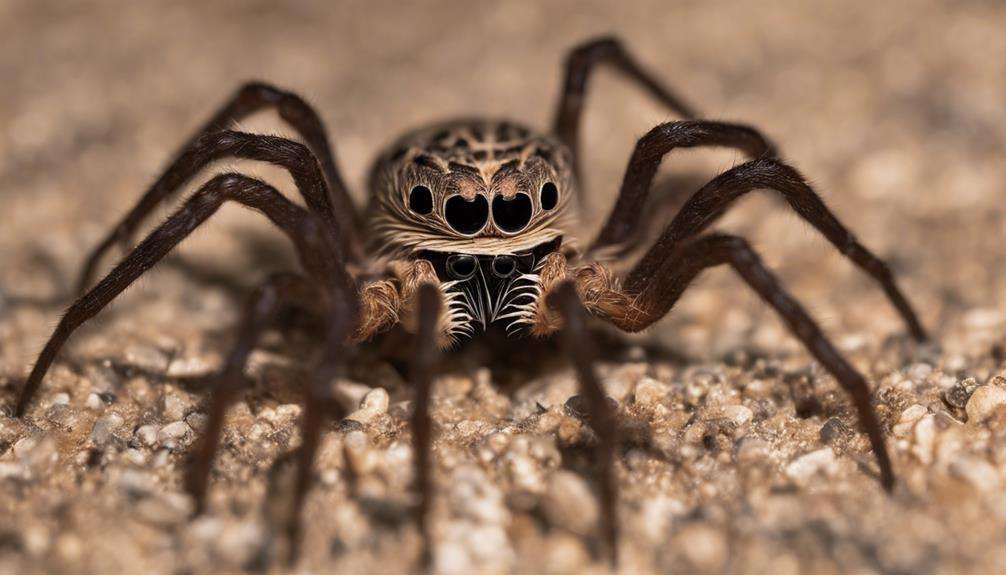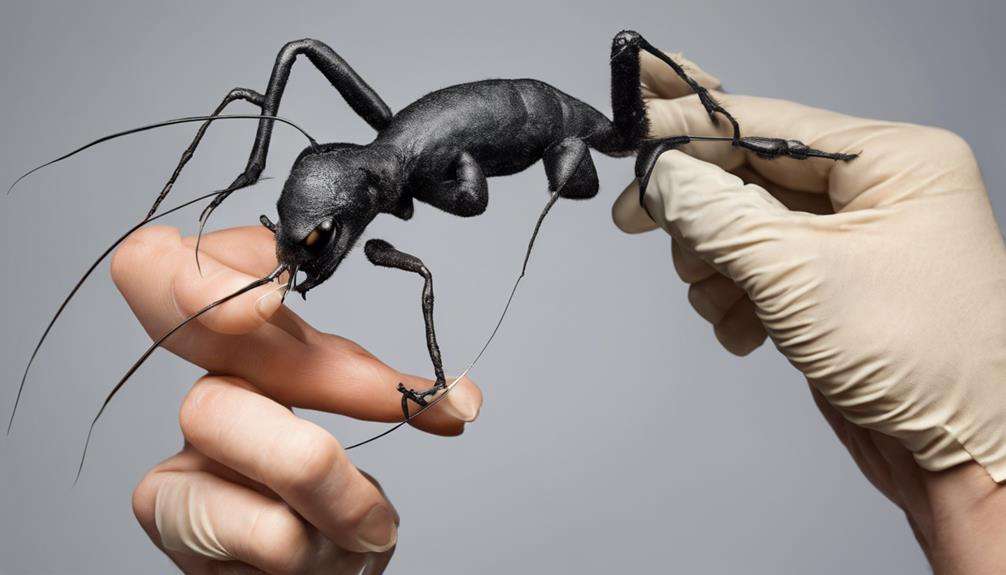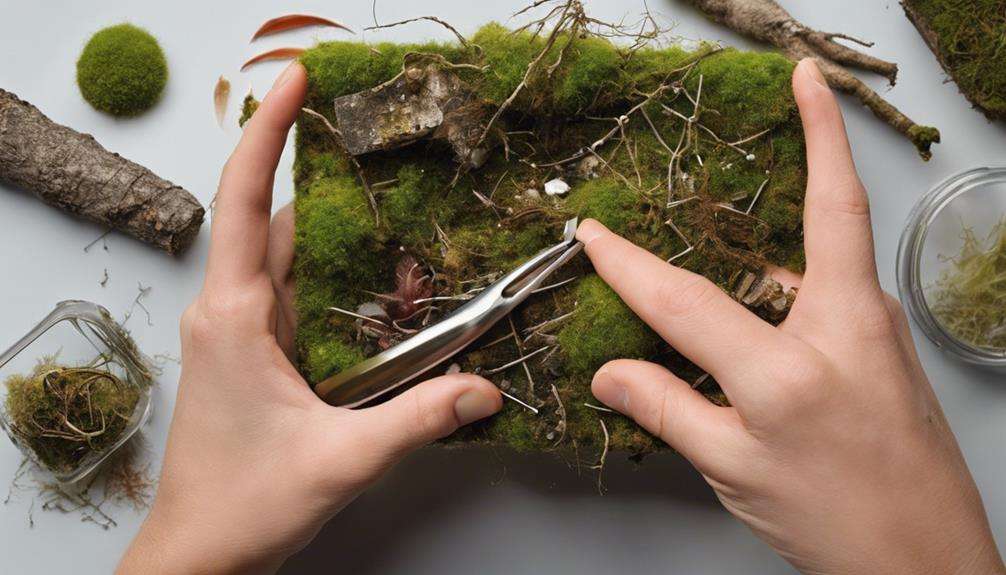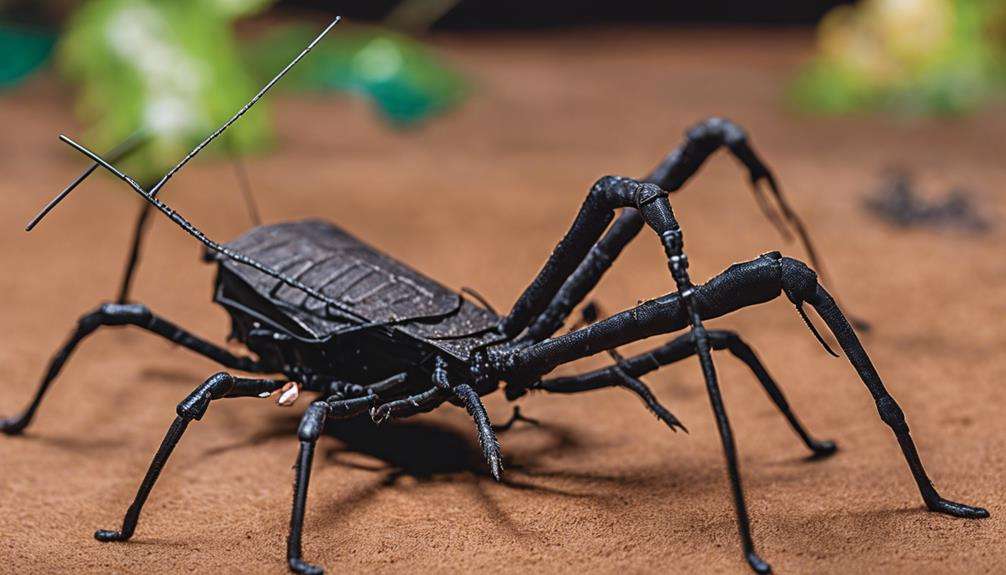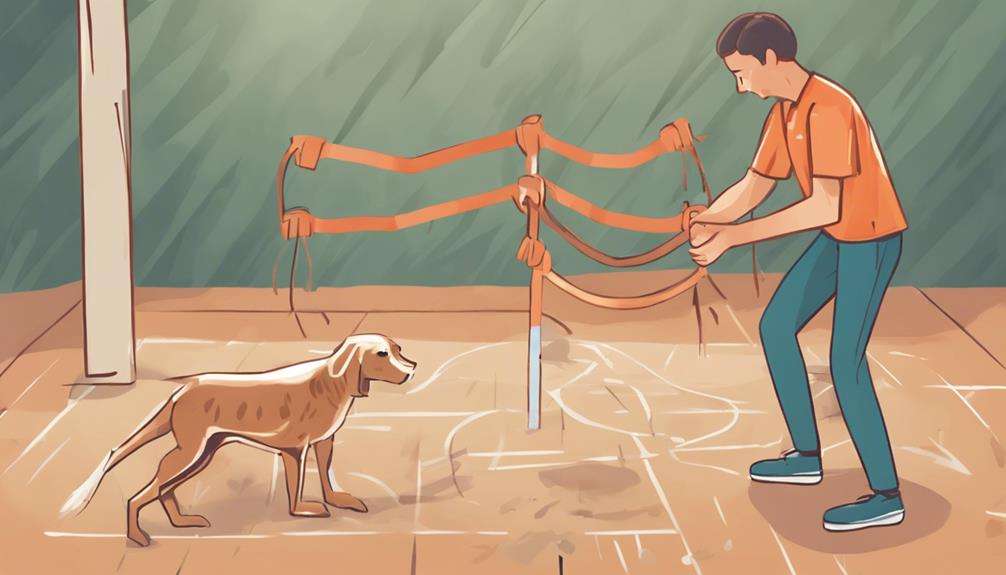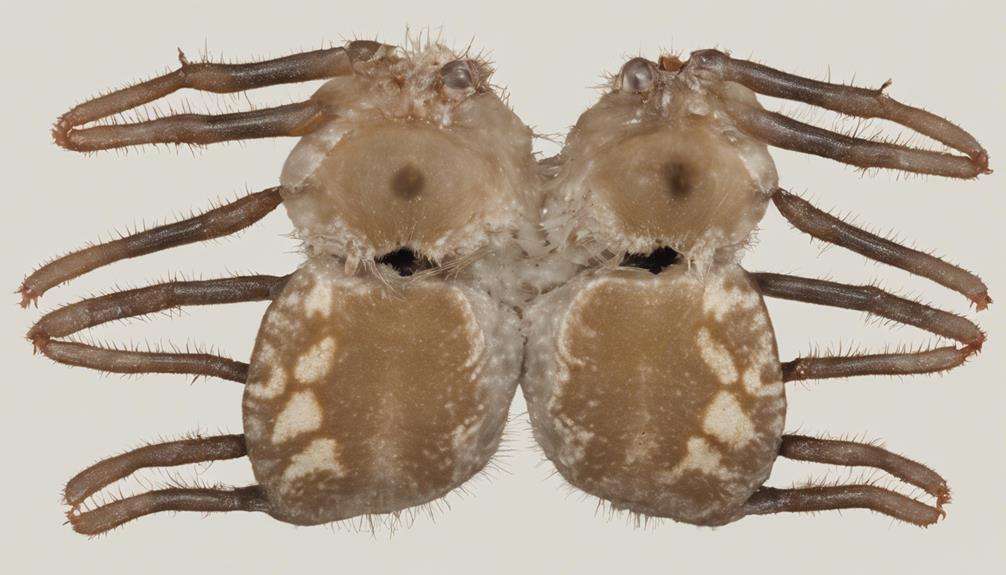When it comes to caring for your vinegaroon companion, handling them is like dancing with a delicate partner. Understanding the nuances of their behavior can enhance your bond and ensure a positive experience.
As you navigate the world of vinegaroon pet ownership, mastering the art of gentle yet confident handling is paramount. But what other secrets lie within the realm of vinegaroon care that could elevate your relationship with these unique arachnids?
Key Takeaways
- Approach vinegaroons gently to minimize stress and avoid defensive reactions.
- Provide a safe and comfortable enclosure setup for optimal well-being.
- Understand behavior cues and build trust through gentle interactions.
- Prevent stress by handling with care, monitoring behavior, and seeking veterinary care when needed.
Handling Techniques for Vinegaroons
When handling vinegaroons, gently approach and interact to minimize stress and prevent defensive responses such as releasing a vinegar-like spray. Vinegaroons, also known as whip scorpions, can emit a mild acidic substance as a defense mechanism when feeling threatened. To avoid triggering this reaction, it's crucial to handle them delicately and with care.
During molting periods, it's best to minimize handling to ensure the vinegaroon's safety and comfort as they're more vulnerable at this stage of their growth. Using soft tools or a gentle touch when interacting with vinegaroons can help prevent injuries or distress to these fascinating arachnids. Providing a quiet and undisturbed environment is essential for vinegaroons, especially during molting, to support their overall well-being.
Safe Vinegaroon Interaction Guidelines
When handling vinegaroons, remember to always be gentle to reduce stress on the creature and prevent defensive reactions.
Properly setting up their enclosure, monitoring their behavior closely, and providing a calm environment are crucial for safe interaction.
Handling Vinegaroons Safely
To handle vinegaroons safely and effectively, it's crucial to always wear protective goggles to shield your eyes from potential acid spray during interaction. Vinegaroons, though non-venomous, can release acetic acid when threatened, which may irritate the skin and eyes.
Proper handling techniques involve gentle interaction to minimize stress and ensure the well-being of your pet. When handling a vinegaroon, be cautious with their delicate front legs and tails to avoid causing harm or stress.
In case of accidental contact with vinegaroon acid, wash the affected area promptly with water and seek medical attention if necessary. By following these guidelines and using protective gear like goggles, you can safely enjoy interacting with your vinegaroon pet.
Proper Enclosure Setup
For optimal safety and well-being of your vinegaroon pet, ensure the enclosure is set up with a glass tank that's 2-3 times the length of the vinegaroon, providing ample space for movement and burrowing.
- Substrate: Use a mixture of potting soil, peat moss, and coir to facilitate burrowing behavior and maintain appropriate humidity levels.
- Hiding Spots: Incorporate rocks or caves to offer hiding spots for the vinegaroon, promoting a sense of security and reducing stress.
- Humidity: Monitor and maintain proper humidity levels within the enclosure to support the vinegaroon's well-being.
- Secure Ventilation: Ensure the enclosure has proper ventilation to prevent stagnant air and promote a healthy environment.
- Water Dish: Include a shallow water dish for the vinegaroon to access drinking water as needed.
Monitoring Behavior Closely
To ensure the optimal care and health of your vinegaroon pet, closely monitoring its behavior is essential for identifying signs of stress and maintaining its well-being. Keep a shallow water dish in its enclosure to provide hydration and ensure humidity levels are adequate. Make sure hiding spots are available for the vinegaroon to feel secure.
Monitor its environment for any changes in temperature, lighting, or substrate that may affect its behavior. Regularly check for any abnormal behaviors such as excessive hiding, reduced appetite, or aggression towards handlers. By observing its movements and interactions with the environment, you can better understand and address any issues that may arise.
Behavior Insights for Vinegaroon Enthusiasts
As a vinegaroon enthusiast, understanding the behavior patterns of these nocturnal arachnids is crucial. By recognizing their communication cues, particularly during mating rituals, you can gain valuable insights into their interactions.
It's essential to comprehend signs of aggression in vinegaroons to ensure safe and respectful handling practices.
Vinegaroon Behavior Patterns
Vinegaroons exhibit distinct nocturnal behavior patterns, displaying heightened activity levels during the night as they engage in hunting and exploration activities. Understanding these natural behavior cues is crucial for creating a suitable environment for your pet.
Here are some insights into vinegaroon behavior patterns:
- Vinegaroons are solitary creatures and prefer to live alone, only coming together to mate.
- They communicate through vibration and tactile cues, using their sensitive front legs to navigate and detect their surroundings.
- When stressed or threatened, vinegaroons may release a vinegar-smelling liquid as a defense mechanism.
- Their nocturnal nature means they're most active at night, exploring their surroundings under the cover of darkness.
- Providing a quiet and dark environment during the day can help mimic their natural behavior patterns and promote their well-being.
Communication Cues in Vinegaroons
Communication among vinegaroons involves intricate vibrations and movements, particularly during mating rituals. They utilize their antenniform legs to sense the environment and communicate with other vinegaroons through subtle cues.
Aggressive postures, such as raising their front legs, serve as a defensive response or a warning of potential acid spraying. Pheromones also play a crucial role in their communication, aiding in attracting mates and demarcating territorial boundaries.
Understanding Aggression in Vinegaroons
When observing vinegaroons, enthusiasts can discern signs of aggression through subtle behavioral cues and physical indicators. Aggressive behavior in vinegaroons is often a response to stress or perceived threats, leading them to utilize their acetic acid as a defensive mechanism.
To understand and address aggression in vinegaroons effectively, consider the following:
- Recognizing Signs of Agitation: Watch for raised front legs, tail arching, or hissing noises.
- Minimizing Stress Factors: Ensure a calm and predictable environment for your vinegaroon.
- Implementing Gentle Handling Techniques: Avoid sudden movements to prevent defensive responses.
- Promoting Well-Being: Limit handling to reduce the likelihood of aggressive behavior.
- Preventing Aggressive Encounters: Learn to interpret your vinegaroon's behavior to maintain a harmonious relationship.
Taming Your Pet Vinegaroon
To initiate the taming process with your pet vinegaroon, approach with slow and gentle movements to build trust. Allow your vinegaroon to walk onto your hand voluntarily, as this helps in establishing a sense of comfort and security. Avoid sudden movements or loud noises that can startle your pet vinegaroon, as they may perceive these as threats. Spending time near the enclosure can also help familiarize your vinegaroon with your presence, aiding in the taming process.
Ensure your pet vinegaroon has a shallow water dish for drinking and maintaining humidity levels. Provide hiding spots within the enclosure to make your vinegaroon feel safe and secure. Feeder insects should be readily available to meet their dietary needs. Vinegaroons prefer an environment with a damp substrate, so it's essential to keep the enclosure moist.
Remember to gradually increase handling sessions to help your vinegaroon become more accustomed to interaction, fostering a stronger bond over time.
Bonding Tips With Vinegaroon Pets
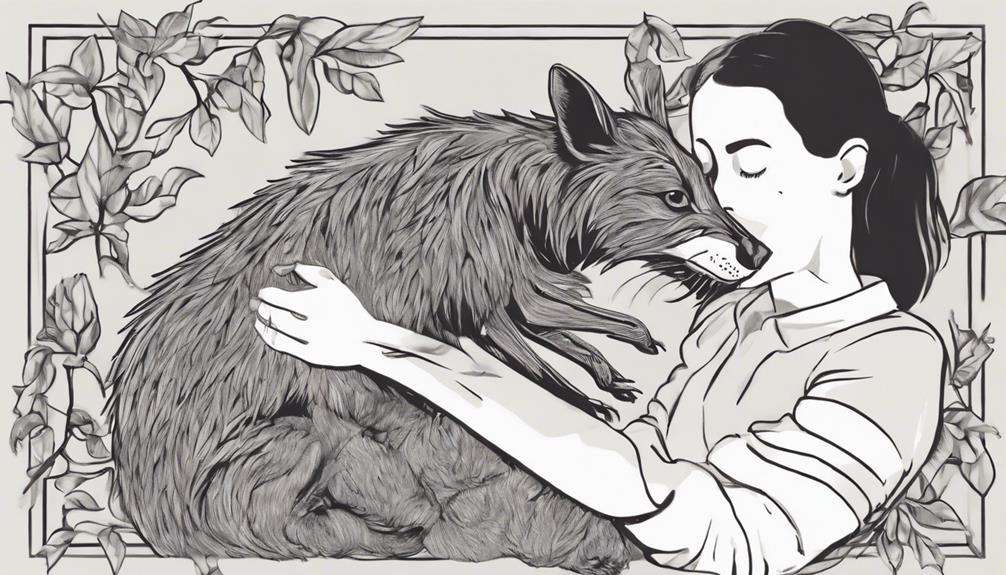
Implement consistent and gentle handling techniques to foster a trusting relationship with your pet vinegaroon. Spending time near the vinegaroon's enclosure allows them to acclimatize to your presence, building familiarity and trust. When interacting with your vinegaroon, offer treats like crickets or mealworms by hand to create positive associations and reinforce bonding. Remember to speak softly and move slowly around the vinegaroon to avoid startling them, as sudden movements or loud noises can stress them out. Establishing a routine for feeding and interaction will help build trust and familiarity with your pet over time.
- Provide Hiding Spots: Ensure your vinegaroon has hiding spots in its enclosure to help them feel secure.
- Offer Treats: Use treats like crickets or mealworms to create positive associations during interactions.
- Establish Routine: Set a consistent schedule for feeding and handling sessions to build trust.
- Move Slowly: Approach your vinegaroon calmly and avoid sudden movements to prevent stress.
- Avoid Sudden Movements: Sudden movements or loud noises can startle your vinegaroon, hindering bonding progress.
Common Mistakes in Vinegaroon Handling
Handling vinegaroons incorrectly can result in stress for the pet and defensive behaviors that may lead to harmful outcomes. One common mistake in vinegaroon handling is failing to approach them calmly and gently. Sudden movements or loud noises can startle the vinegaroon, causing it to feel threatened and exhibit defensive behavior. This can trigger the release of acetic acid, potentially harming both the handler and the vinegaroon.
Improper handling techniques, such as gripping the delicate front legs too tightly, can lead to injuries. To avoid these issues, always use proper handling techniques, like allowing the vinegaroon to walk onto your hand rather than trying to pick it up. Building trust with your vinegaroon through consistent and patient interactions can help reduce stress for the pet and minimize defensive reactions.
Frequently Asked Questions
How Do You Handle Vinegaroons?
When handling vinegaroons, remember to use proper techniques and safety precautions. Approach them gently to build trust and bond effectively. Understand their temperament, communicate through behavioral cues, and adjust handling methods accordingly for a positive interaction.
Can You Have a Vinegaroon as a Pet?
Yes, you can have a vinegaroon as a pet. These intriguing arachnids require a suitable enclosure, a diet of insects, and a well-maintained habitat. While handling precautions are necessary due to their defensive mechanisms, bonding time can enhance your experience.
Can You Hold Vinegaroons?
You can hold vinegaroons with proper handling techniques. Safety precautions include using a gentle touch and observing behavior cues. Bonding experiences are essential for trust building. Encourage exploration while respecting boundaries to create a positive interaction.
Can You Keep Vinegaroons Together?
Yes, you can keep vinegaroons together in the same enclosure, but it's crucial to monitor their behavior closely. Ensure a spacious habitat with hiding spots, multiple water sources, and suitable temperature and humidity levels. Be cautious during mating to prevent aggression.
Conclusion
In conclusion, proper handling of vinegaroons is crucial for their well-being and your enjoyment as a pet owner. Did you know that vinegaroons can live up to 10 years in captivity?
By following safe interaction guidelines, understanding their behavior, and avoiding common handling mistakes, you can build a strong bond with your pet vinegaroon and create a rewarding experience for both of you. Remember, patience and care are key when it comes to handling these fascinating creatures.
